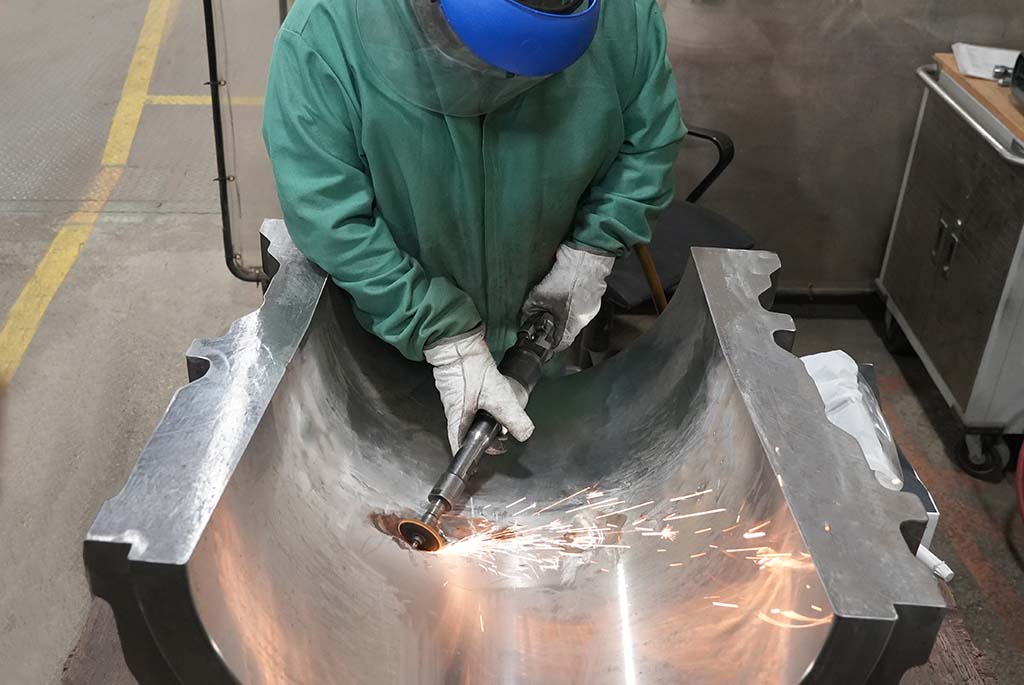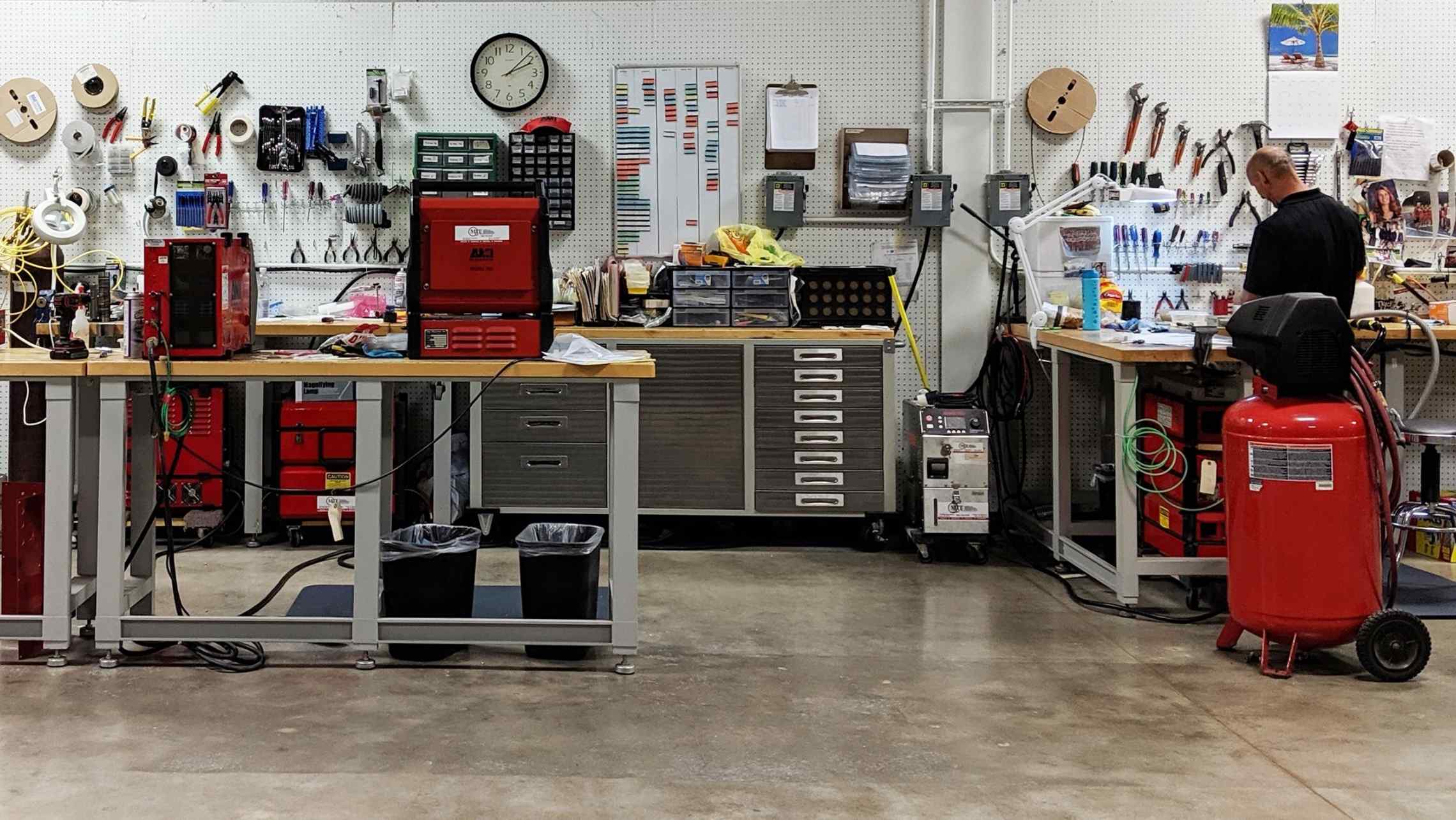Everything about Welding: Secret Insights Into Techniques and Ideal Practices for Success
Welding encompasses a selection of techniques, each suited for specific materials and applications. Understanding these methods, such as GMAW, SMAW, and TIG, is crucial for accomplishing suitable outcomes. The right equipment and safety and security techniques can not be forgotten. As preparation and repairing play crucial roles in the welding procedure, grasping these components can greatly enhance the quality of the end product. What are the essential aspects that ensure an effective weld?
Comprehending Different Welding Techniques
Welding methods include a variety of methods, each suited to particular applications and materials. Among one of the most typical methods are Gas Metal Arc Welding (GMAW), Secured Steel Arc Welding (SMAW), and Tungsten Inert Gas Welding (TIG) GMAW, likewise called MIG welding, is popular for its rate and adaptability, making it ideal for slim products. SMAW, or stick welding, is preferred for its simplicity and performance in exterior environments, especially with thicker steels. TIG welding offers accuracy and control, making it appropriate for elaborate job and non-ferrous steels (Belgrade Fabrication). Each technique has its distinct benefits and considerations, allowing welders to select the very best method based upon the project's needs, material type, and wanted outcomes. Comprehending these methods is essential for effective welding
Crucial Welding Devices and Devices
While different welding techniques call for particular abilities, the best devices and tools are just as essential for accomplishing quality results. Vital welding devices consists of welding equipments, which differ relying on the method-- such as MIG, TIG, or stick welding. Safety equipment, consisting of safety helmets, aprons, and handwear covers, assurances security and convenience throughout the process. In enhancement, fixtures and clamps aid protect materials in position, making certain precision in welds. Consumables like welding poles, cable, and shielding gas are additionally critical components that affect the top quality of the weld. Devices such as grinders and cutters promote surface area prep work and post-weld completing, contributing to a professional outcome. Buying top notch tools inevitably improves the effectiveness and performance of welding projects.
Safety Practices in Welding
Appropriate safety techniques are essential in the welding sector to safeguard workers from potential threats. Welders need to use ideal individual safety tools (PPE), consisting of safety helmets with proper shading, gloves, and flame-resistant apparel. Ample air flow is vital to minimize direct exposure to unsafe fumes and gases produced throughout the welding procedure. Additionally, workers need to be educated in the appropriate handling of welding devices to avoid accidents. Fire safety and security actions, such as maintaining combustible materials far from the welding area and having fire extinguishers readily offered, are needed. Normal assessments of equipment and work spaces can assist recognize prospective threats prior to they result in crashes. By sticking to these safety methods, welders can create a safer working environment and reduce risks related to their trade.
Preparing Products for Welding
Preparing products for welding is a crucial step that considerably affects the high quality and honesty of the final product (Belgrade Welding). Correct preparation entails cleansing the surfaces to remove pollutants such as oil, rust, and dust, which can endanger the weld. Methods such as grinding, fining sand, or using solvents are generally employed to achieve a clean surface area. In addition, ensuring that the materials mesh snugly is crucial; voids can lead to weak welds. It's also essential to think about the alignment and positioning of the components, as this will affect the ease of welding and the final outcome. Picking the ideal filler material and making certain compatibility with the base metals is essential for achieving solid, resilient welds.
Tips for Getting High-Quality Welds
Attaining top quality welds calls for attention to detail and adherence to ideal practices throughout the welding procedure. Proper joint prep work is crucial, making certain surfaces are clean and totally free from contaminants. Picking the suitable filler material and welding method based upon the base steels is vital for optimal bonding. Maintaining consistent travel speed and angle while welding can advertise and prevent flaws harmony. In addition, managing heat input is vital; extreme heat can lead to warping and damaged joints. On a regular basis checking the welds throughout the procedure enables prompt adjustments if needed. Using appropriate post-weld treatments, such as cleansing and stress and anxiety alleviation, can boost the longevity and integrity of the weld, eventually making certain an effective outcome.
Fixing Common Welding Issues
Welding typically presents difficulties that can affect the top quality and honesty of the end product. Common problems such as porosity, inconsistent weld grains, and overheating can occur, each needing particular repairing strategies. Understanding these issues is vital for welders to enhance their abilities and achieve ideal outcomes.
Porosity Problems Explained
Although porosity can typically be ignored, it remains an important concern in welding that can jeopardize the integrity of a completed item. Porosity refers to the presence of little gas pockets within the weld grain, which can lead and deteriorate the joint to premature failure. This trouble typically occurs from impurities, dampness, or incorrect securing gas coverage during the welding procedure. To reduce porosity, welders should verify that the base products are completely dry and clean, use suitable securing gases, and maintain consistent welding parameters. Regularly examining the devices and environment can likewise help determine possible concerns prior to they show up in the weld. Dealing with porosity properly is necessary for accomplishing strong, long lasting welds that satisfy high quality standards.

Inconsistent Weld Beans
Inconsistent weld beads can considerably impact the top quality and strength of a finished product. Different variables add to this concern, including inappropriate travel speed, inaccurate amperage settings, and inconsistent electrode angles. When the welder relocates too promptly, a grain might appear slim and lack infiltration, while relocating too slowly can create excessive build-up. Additionally, using the wrong amperage can cause either damaging or extreme spatter, both of which concession weld honesty. The welder's strategy, such Discover More Here as irregular lantern motion, can likewise cause irregular grain appearance. To reduce these issues, welders ought to concentrate on keeping consistent, controlled motions and ensuring appropriate tools setups to achieve harmony in their welds. Consistency is crucial to attaining trustworthy and solid welds.
Getting Too Hot and Warping Issues
Excessive heat during the welding procedure can cause substantial getting too hot and deforming issues, impacting the structural stability of the workpiece. These problems typically show up as distortion, which can compromise positioning and fit-up, making additional setting up testing. Elements adding to overheating include the option of welding criteria, such as voltage and take a trip rate, as well as the sort of material being bonded. To minimize these issues, welders ought to preserve constant travel speed and appropriate warm input while monitoring the work surface temperature. In addition, pre-heating or post-weld warmth therapy can aid reduce stress and anxieties brought on by fast air conditioning - Fabrication. Normal inspection and adherence to best methods are important in preventing getting too hot and ensuring the durability and reliability of welded frameworks
Frequently Asked Inquiries
What Are the Career Opportunities in the Welding Market?
The welding market offers diverse career chances, consisting of positions as welders, teachers, inspectors, and engineers. Specialists can operate in manufacturing, building and construction, aerospace, and auto sectors, profiting from strong demand and affordable incomes in numerous roles.
Exactly How Can I Improve My Welding Rate Without Sacrificing High Quality?
To boost welding speed without compromising high quality, one should exercise reliable methods, preserve devices, enhance setups, and boost hand-eye sychronisation. Routine training and looking for comments use this link can additionally significantly add to accomplishing faster, premium welds.
What Certifications Are Offered for Welders?
Numerous certifications exist for welders, including those from the American Welding Society (AWS), the National Facility for Building Education And Learning and Study (NCCER), and different industry-specific companies. These qualifications enhance employability and show ability proficiency.
Just How Does Welding Influence the Qualities of Metals?
Welding influences the properties of steels by changing their microstructure, which can result in modifications in stamina, ductility, and hardness. Warm input and air conditioning rates throughout the procedure substantially impact these product features.
Can I Weld Dissimilar Metals Together?
